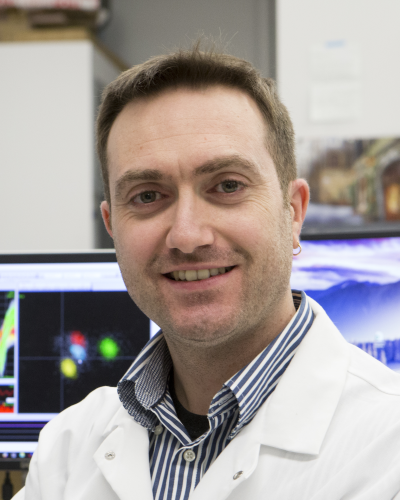Biological Science Faculty Member
Dr. Roberto Vincis
- Office: 211 Biomedical Research Facility
- Office: (850) 644-7328
- Area: Neuroscience
- Lab: Biomedical Research Facility
- Lab: (850) 644-7386
- Mail code: 4370
- E-mail: rvincis@fsu.edu

Assistant Professor
PhD., University of Geneva (Switzerland), 2013
Graduate Faculty Status
The research in the lab aims to investigate the basis of our ability to decide and plan our eating behaviors and dietary choices. The motivation to eat depends greatly on the taste of food and the reward experienced while eating. How are we able to extract taste information from what we eat? How do we use taste information to decide what to eat? Specifically, how does the brain allow this to happen? What are the specific regions and connections of the brain that are fundamental to this process? By understanding these points, we will gather critical knowledge on how the brain controls food consumption and feeding behaviors, both of which are relevant for understanding eating disorders. Our lab addresses these points by studying the neural circuits and computations of brain regions involved in taste and reward processing, such as the insular cortex and other subcortical areas. Current projects in the lab involve the following:
1) understanding how cortical (gustatory cortex; GC) and thalamic (gustatory thalamus and limbic thalami) areas encode sensory information when animals are actively experiencing taste stimuli;
2) investigating the role of the endocannabinoid modulation of information-processing in the GC in relation to taste processing and food-oriented behavior;
3) investigating the forebrain neural processing mediating the perception of intraoral temperature and determine how temperature of taste solutions modulates gustatory processing in the GC and taste-related behavior.
To achieve these goals, we rely on novel and sophisticated experimental techniques, including behavioral training, anatomical and genetic targeting of specific neural populations, recordings of neural activity in alert animals with multi electrodes and optical imaging, and opto- and chemogenetic manipulation of brain activity.
Dr. Roberto Vincis is currently recruiting new postdoctoral investigators for Fall 2022.
Selected Publications:
Neese, C., C. G. Bouaichi, T. Needham, M. Bauer, R. Bertram, and R. Vincis (2022) Active Licking Shapes Cortical Taste Coding. Journal of Neuroscience .
Samuelsen, C. L., and R. Vincis (2021) Cortical Hub for Flavor Sensation in Rodents. Frontiers in System Neuroscience .
Shakeshaft, M., and R. Vincis (2020) Bad food memories? It is just a matter of time. Journal of Physiology 598(23): 5303-5304.
(Pubmed)
Bouaichi, C. G., and R. Vincis (2020) Cortical processing of chemosensory and hedonic features of taste in active licking mice. Journal of Neurophysiology .
(Pubmed)
Vincis, R., K. Chen, L. Czarnecki, J. Chen, and A. Fontanini (2020) Dynamic representation of taste-related decisions in the gustatory insular cortex of mice. Current Biology .
Chen, K., R. Vincis, and A. Fontanini (2019) Disruption of Cortical Dopaminergic Modulation Impairs Preparatory Activity and Delays Licking Initiation. Cerebral Cortex .
(Pubmed)
Vincis, R., and A. Fontanini (2016) A gustocentric perspective to understanding primary sensory cortices. Current Opinion in Neurobiology .
(Pubmed)
Vincis, R., and A. Fontanini (2016) Associative learning changes cross-modal representations in the gustatory cortex. eLife .
(Pubmed)
Vincis *, R., S. Lagier *, D. Van der Ville, I. Rodriguez, and A. Carleton (2015) Sensory-evoked intrinsic imaging signals in the olfactory bulb are independent of neurovascular coupling. Cell Report .
(Pubmed)
Abraham*, N., R. Vincis*, S. Lagier, I. Rodriguez, and A. Carleton (2014) Long term functional plasticity of sensory inputs mediated by olfactory learning. eLife .
(Pubmed)
Vincis, R., O. Gschwend , K. Bhaukaurally , J. Beroud , and A. Carleton (2012) Dense representation of natural odorants in the mouse olfactory bulb. Nature Neuroscience .
(Pubmed)
Vincis, R., and A. Fontanini (2019) Central taste anatomy and physiology. In Handbook of Clinical Neurology
(Pubmed)

